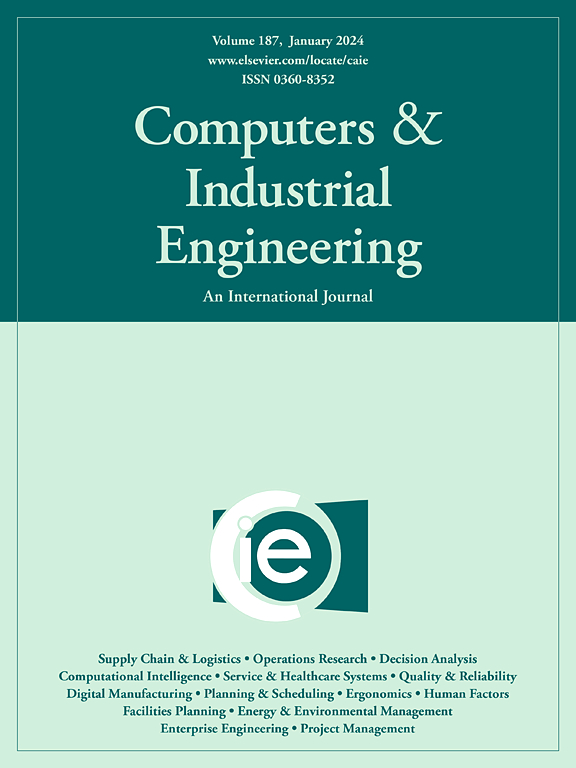Developing multistep-ahead quality prediction models for early warning
IF 6.5
1区 工程技术
Q1 COMPUTER SCIENCE, INTERDISCIPLINARY APPLICATIONS
引用次数: 0
Abstract
In the manufacturing industry, product quality is a critical variable to monitor and control. Chemical plants, often large-scale to meet market demands, face challenges due to inherent nonlinearities and slow dynamics. These issues can hinder conventional methods from identifying disturbances before significant deviations in product quality occur, making early warning systems essential for preventing defects. This study introduces a sophisticated two-step multi-step ahead quality prediction framework for early warning. In the first step, a multi-step nonlinear state-space model (MS-NSSM) utilizes a lower-dimensional latent space with reduced noise to capture dynamic information from past process variables for future multi-step process variable prediction. In the second step, a regression variational autoencoder (Reg-VAE) uses these predicted future process variables to establish the process-quality relationship, enabling future multi-step quality prediction through another lower-dimensional latent space. The proposed method’s effectiveness is demonstrated through numerical simulations and real-world industrial cases. Performance metrics show a significant average accuracy for five prediction steps, with the proposed method achieving an R2 value of 0.81 and MAE of 0.26 in numerical cases. In the industrial cases, the proposed method achieves an R2 value of 0.995 and MAE of 0.03. The proposed method outperforms the comparative methods by providing early warnings 30 time points before offline laboratory tests and shows substantial potential for improving quality monitoring in industrial applications.
开发多步超前质量预警预测模型
在制造业中,产品质量是一个需要监控的关键变量。化工厂往往是为了满足市场需求而进行大规模生产的,但由于其固有的非线性和缓慢的动态,化工厂面临着挑战。这些问题会阻碍传统方法在产品质量发生重大偏差之前识别干扰,从而使早期预警系统对预防缺陷至关重要。本文提出了一种先进的两步多步提前质量预测框架。在第一步中,多步非线性状态空间模型(MS-NSSM)利用降低噪声的低维潜在空间从过去的过程变量中捕获动态信息,用于未来的多步过程变量预测。在第二步中,回归变分自编码器(Reg-VAE)使用这些预测的未来过程变量来建立过程质量关系,从而通过另一个低维潜在空间实现未来的多步质量预测。通过数值模拟和实际工业实例验证了该方法的有效性。性能指标显示五个预测步骤的平均精度显著,在数值情况下,该方法的R2值为0.81,MAE为0.26。在工业案例中,该方法的R2值为0.995,MAE为0.03。该方法在离线实验室测试前30个时间点提供预警,优于比较方法,在工业应用中显示出改善质量监测的巨大潜力。
本文章由计算机程序翻译,如有差异,请以英文原文为准。
求助全文
约1分钟内获得全文
求助全文
来源期刊

Computers & Industrial Engineering
工程技术-工程:工业
CiteScore
12.70
自引率
12.70%
发文量
794
审稿时长
10.6 months
期刊介绍:
Computers & Industrial Engineering (CAIE) is dedicated to researchers, educators, and practitioners in industrial engineering and related fields. Pioneering the integration of computers in research, education, and practice, industrial engineering has evolved to make computers and electronic communication integral to its domain. CAIE publishes original contributions focusing on the development of novel computerized methodologies to address industrial engineering problems. It also highlights the applications of these methodologies to issues within the broader industrial engineering and associated communities. The journal actively encourages submissions that push the boundaries of fundamental theories and concepts in industrial engineering techniques.
 求助内容:
求助内容: 应助结果提醒方式:
应助结果提醒方式:


